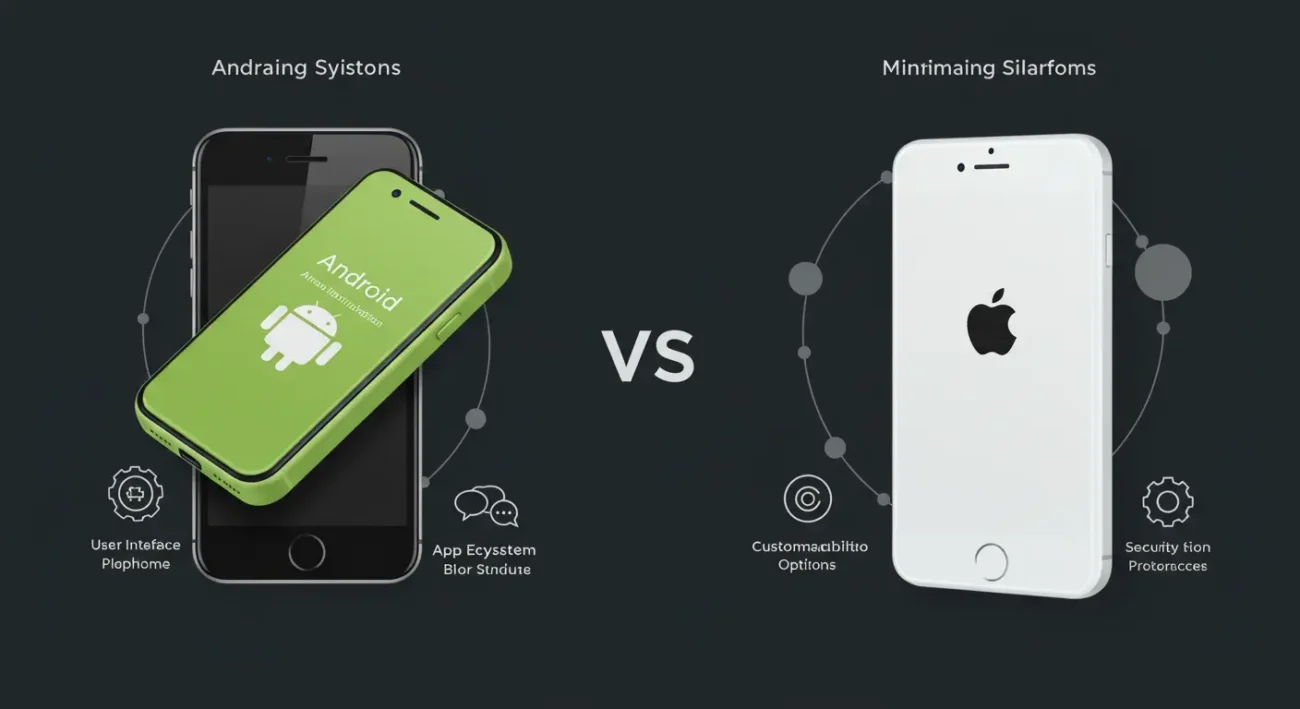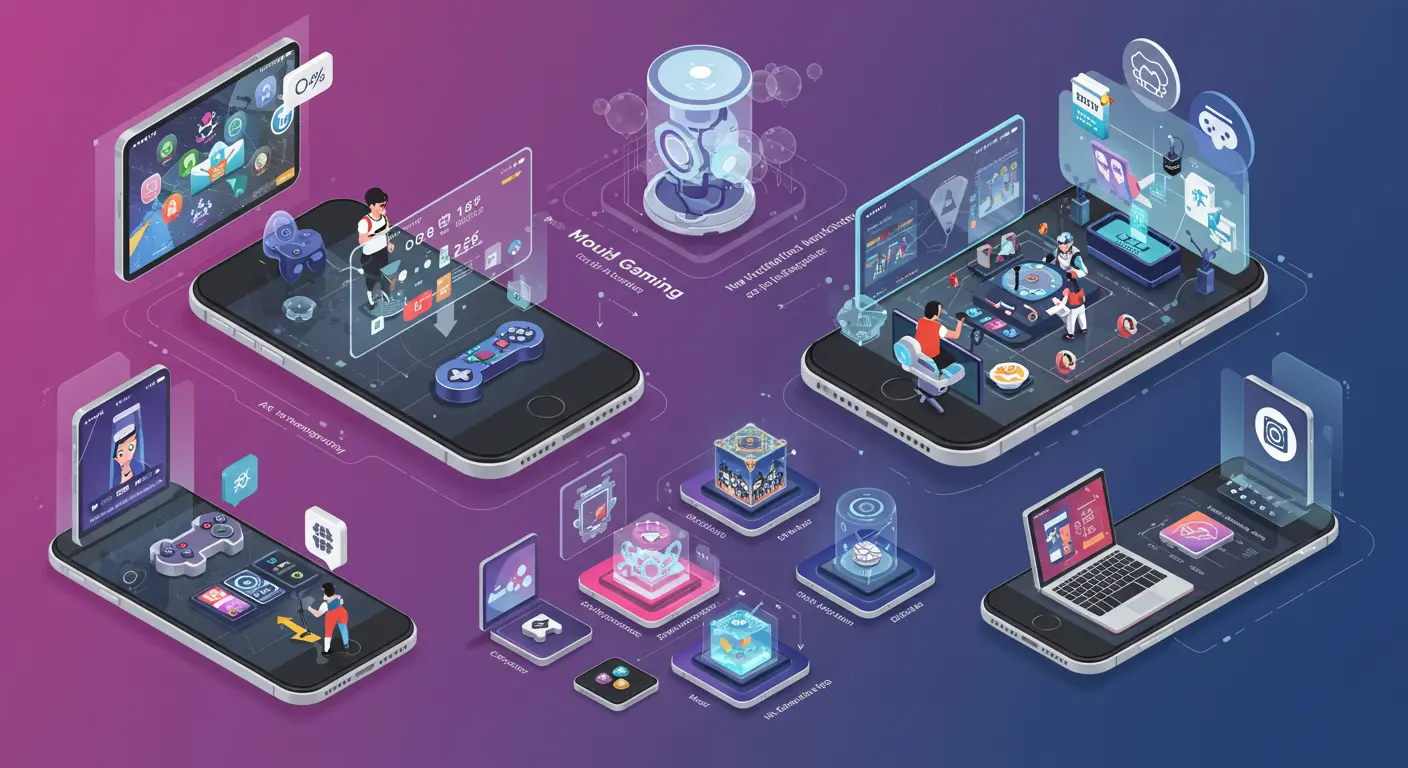Mobile gaming isn’t just a pastime anymore it’s a full blown battleground of innovation. If you play on Android / iOS (which most people do), then you’re part of a fast-changing world where what’s “cool” today might be old news tomorrow.
I’ll walk you through the new trends in Android and iOS mobile gaming that are shaping the next few years. You’ll get a clear view of what’s changing from AI assistants in games to how monetization is evolving, what hardware is enabling all this, and where developers (and players) should look next. I’ll also compare how this post stacks up against three existing competitor articles and point out where I’m adding fresh insight you won’t find there.
Trends Shaping Android & iOS Mobile Gaming in 2025
Here’s a breakdown of what’s driving change now. Each trend is tied to real examples or emerging tech.
AI Assistants & In Game Hints
One of the most exciting developments is embedding AI helpers inside the game itself. Google’s Gemini Live (an overlay integrated into Android games) lets players ask for hints, tips, or strategy advice without pausing or leaving the screen.
On iOS, Apple isn’t silent, either as AI tools improve, we’ll see more smart assistants built into games or via iOS features (though Apple’s stricter ecosystem means fewer third-party overlays).
This trend matters because many players abandon a game when stuck. Being able to ask “What should I do next?” in real time keeps you in the flow. For devs, this means designing with AI in mind making the game state queryable, exposing context to the assistant.
Cloud Gaming & Game Streaming to Mobile Devices
Streaming isn’t just for Netflix it’s coming hard into mobile games. With cloud gaming, your phone doesn’t need to be a monster in specs; much of the heavy lifting happens on remote servers.
Razer’s “PC Remote Play” app now allows PC games to stream smoothly to iOS and Android with lower latency via the AV1 codec and integration with controllers and haptics.
This opens up a future where big console/PC titles come to your phone no ports needed. For Android, this is more flexible because of looser restrictions. On iOS, Apple already supports cloud services like Xbox Cloud Gaming (with limitations), but in many cases it depends on Apple’s policies.
One caveat: latency and connectivity matter a lot. In places with spotty mobile internet, cloud gaming won’t shine yet.
Hardware Advances:
The gap between console-level and mobile gaming is closing thanks to better hardware. For instance, the iQOO Q3 “mobile graphics card” is touted as the first to support full-scene ray tracing on mobile.
Smartphones now often come with 120 Hz, 144 Hz, or even higher refresh displays, making animations smoother and controls more responsive. Also, more powerful GPU cores, AI accelerators, and improved memory bandwidth are pushing mobile games into “console quality” territory.
Games on iOS also benefit from Apple’s tight hardware/software integration developers can optimize deeply for Apple chips like the A-series. On Android, the diversity of hardware makes it more challenging, but also more varied (flagships vs midrange vs budget tiers).
Hybrid & Subscription Monetization Models
Traditional free-to-play (with in-app purchases) is no longer the only game. More hybrid models are emerging, combining ads, purchases, and subscriptions.
Apple’s Apple Arcade and Google’s Play Pass already offer catalog-style access to many games.
Meanwhile, Netflix has begun bundling games as part of its subscription model giving access to mobile games as another perk.
What’s new in 2025 is deeper mixing: games may let you play ad-supported for free, or subscribe for premium benefits, or buy “boosts.” This flexibility gives players choice and helps devs stabilize revenue.
Live Ops, Events & Community Engagement
Games now live and breathe they aren’t just released once and forgotten. The “Live Ops” approach (in-game events, changing themes, limited-time content) is now essential to keep people coming back.
For example, brand tie-ins (e.g. themes from movies, influencers, popular IP crossovers) unlock fresh skins, maps, story arcs.
This is already common in big games. But newer trends include letting the community vote on content, co-design events, seasonal roadmap visibility, even “player-run events.” This level of transparency deepens loyalty
CrossPlatform, Cross Progression & Seamless Switching
Players expect to move between devices. If I start a game on my iPhone and later pick up my iPad or Android tablet (or play on PC), I don’t want to lose progress or feel constrained.
Cross-progression (where your account, inventory, achievements persist) is becoming standard in well-funded titles. Cross-play (players on different platforms playing together) is also growing.
This trend benefits both Android and iOS users e.g. someone on Android and someone on iOS can play together — and forces developers to design universally.
Where older articles sometimes talk about this in passing, I’m emphasizing the increasing expectation: it’s no longer a “bonus,” it’s almost mandatory if you want wide adoption.
Alternative App Stores & Payment Channels
This is a rising battleground. In 2025, many developers are exploring alternative app stores (outside Apple’s App Store and Google Play) and direct payment (DTC) webshops to bypass high platform fees.
In Europe, Apple has been forced by law (the DMA) to allow alternative stores and side loading in certain cases, making it easier for developers to offer their games directly.
Epic Games is pushing its own app store on Android (and in the EU for iOS).
This trend means players might see more “install from web / install from site” options, more flexible pricing, and possibly regionally tailored payment models.
Ethical Design & Awareness of Dark Patterns
As monetization strategies become more complex, a growing trend is awareness of “dark patterns” manipulative tactics (time pressure, hiding opt-outs, misleading UI) to push a player into making purchases.
A recent research paper (“Level Up or Game Over”) studied ~1,500 mobile games and found dark patterns are widespread, even in games considered “normal” or light.
Players are increasingly vocal about “pay to win” traps, unfair gating, and manipulative ads. Smart developers will distinguish themselves by being transparent, fair, and user-respecting, which builds trust and long-term retention.
Narrow Niches, Indies & Localized Content
While blockbuster “safe bets” still dominate, there’s more room now for small, niche games that speak to subcultures, local stories, or genres not yet saturated.
Indie devs leverage engines like Unity (and others) to deploy on both Android and iOS with relative ease.
Localization (not just language, but culture, payment method, local events) is becoming a must. In markets like India, Brazil, Southeast Asia, locally themed content often wins more engagement than generic global titles.
So you’ll see games emerging that only make sense in a country or for a fandom but they succeed because of their authenticity.
Esports on Mobile, Spectator Modes & Social Sharing
Mobile esports is growing quickly. Titles in competitive genres (MOBA, battle royale, tactical shooters) are now pushing spectator modes, replays, tournaments, built-in broadcasting turning regular games into streaming content.
Casual viewers might watch a mobile tournament while commuting. Some games even allow you to “jump into spectator camera” mode or access replays.
On Android and iOS, integration with social platforms (Twitch, YouTube, TikTok) is tighter. Some games support 1-tap streaming. Engaging with viewers becomes a part of gameplay for creators.
Android vs iOS: Differences That Matter

In understanding these trends, it’s important to highlight Android and iOS differ. Some trends favor one over the other, or are implemented differently.
Platform Openness & Flexibility
- Android is more open: side-loading, alternative stores, more control over overlays and custom install systems.
- iOS is more locked down, but offers stronger security, more predictable hardware, and deep integration (e.g. Metal, Apple’s APIs).
Monetization and User Spending
- iOS tends to have higher in-app purchase (IAP) spending per user even though acquisition cost (CPI) is higher. According to a report, iOS D30 ROAS (return on ad spend) in casual games was ~47% vs 15% on Android.
- On Android, ad monetization is stronger (given broader install base, more ad inventory).
Hardware Consistency
- iOS devices are fewer models (fewer fragmentation) developers can optimise better.
- Android has a wide spread: from low-end phones to flagship beasts. That means devs often have to scale features or use dynamic quality.
Platform Policy & Restrictions
- Apple’s App Store policies are strict about what overlays or payment methods are allowed.
- Android allows more freedom for third-party overlay tools (e.g. AI hints overlays, sideloaded game clients).
Cross Platform Pressure
Because players expect cross-play, devs often must support both but features may roll out first or differently on one platform due to policy or technical constraints.
FAQs
Q: What is meant by “mobile gaming trends”?
A: Mobile gaming trends are the new directions in game design, technology, monetization, and platform changes that shape how games look, feel, and are played on Android and iOS.
Q: Is cloud gaming suitable for all regions?
A: Not yet. Cloud gaming requires strong and stable internet. Regions with slower mobile data or high latency will face challenges before it becomes truly smooth.
Q: Will AI hints spoil the fun?
A: That depends on how they’re designed. If used well — optional, contextual, and non-intrusive AI hints can actually make games more enjoyable rather than ruining the challenge.
Q: Should indie devs aim for Android or iOS first?
A: It really depends on the target audience. Android has a bigger reach in many regions, but iOS players often spend more on in-app purchases. Developers need to decide based on their goals.
Q: How can I avoid dark patterns in games?
A: Look for transparency in costs, avoid manipulative designs, and always give players control. Ethical testing and honest feedback loops help prevent harmful patterns.
Conclusion
Mobile gaming on Android and iOS is evolving faster than ever. New tech like AI assistants in games, smarter hardware, cloud streaming, ethical design, and hybrid monetization models are pushing what’s possible.

